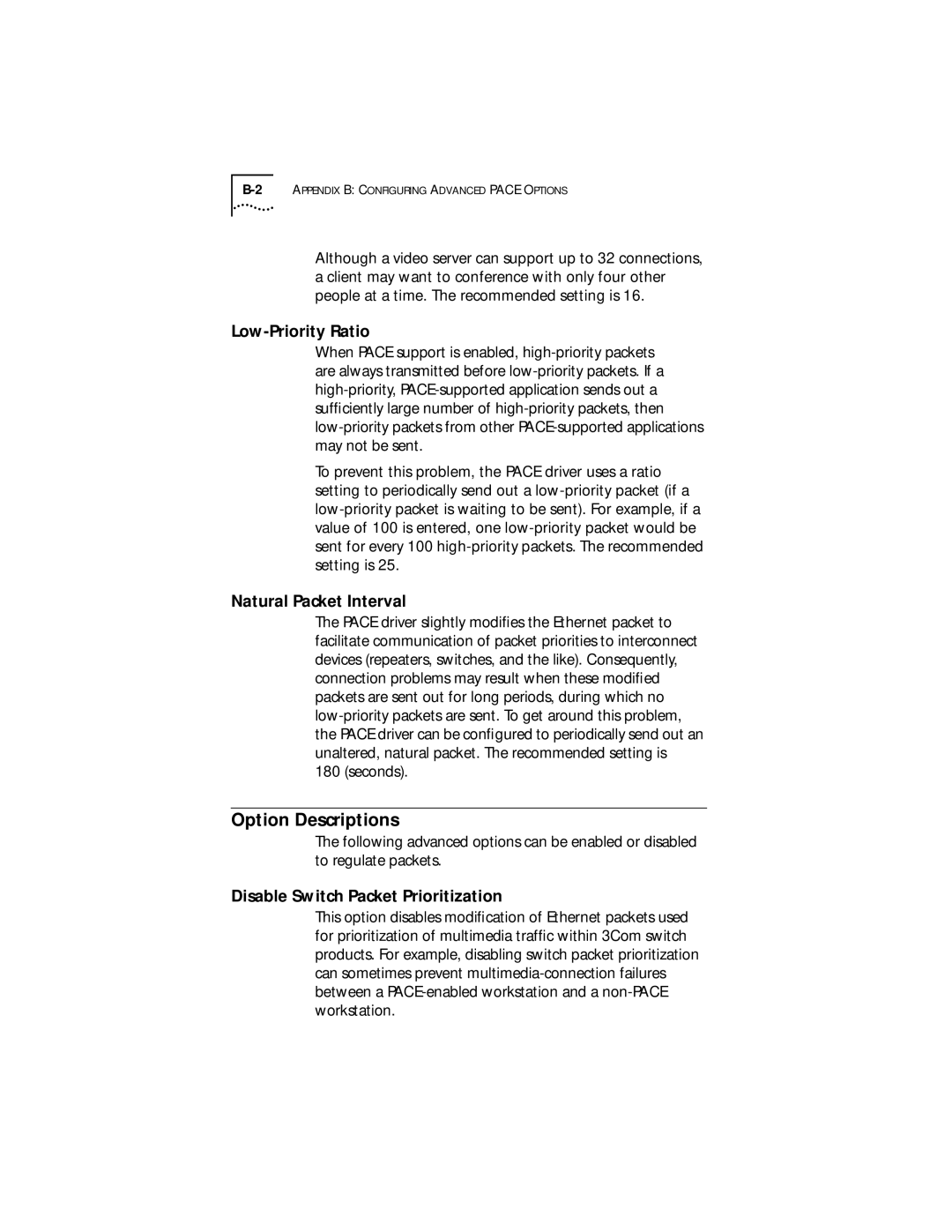
Although a video server can support up to 32 connections, a client may want to conference with only four other people at a time. The recommended setting is 16.
Low-Priority Ratio
When PACE support is enabled,
To prevent this problem, the PACE driver uses a ratio setting to periodically send out a
Natural Packet Interval
The PACE driver slightly modifies the Ethernet packet to facilitate communication of packet priorities to interconnect devices (repeaters, switches, and the like). Consequently, connection problems may result when these modified packets are sent out for long periods, during which no
Option Descriptions
The following advanced options can be enabled or disabled to regulate packets.
Disable Switch Packet Prioritization
This option disables modification of Ethernet packets used for prioritization of multimedia traffic within 3Com switch products. For example, disabling switch packet prioritization can sometimes prevent
